\\\ Silonex NSL32-SR3 ///
"STATIC" Spice Model Derivation
JC Maillet (c) 2008
Static Spice modeling means that time dependencies are not factored into the functional derivation, implying the
model is to be considered for accuracy at DC and up to low speeds only (<5Hz) though this is plenty enough for basic functional
and parametric simulations ... there are several potential sources of distortion known to exist with opto-couplers,
one is tell-taled by a very slight bend occuring in the mid-range of a cell's characteristics (see data below), but this usually affects
signal shaping only if the region containing the bend is traversed quickly and repeatably - a most unlikely scenario in most circuits ...
and the other is due to a "memory" effect following an unusually strong burst of light into the cell (causing it to get
stuck before relase) - again, very unlikely if resistance levels are kept well above a certain minima ... this is easy to
design around - especially with the high sensitivity of the SR3 cell ... note that neither form of distortion is included
in this model by nature of the polynomial interpolations ... again, similar to the Triode models I published
in '98, the data gets interpolated more accurately if the data is first linearised by a logarithmic conversion ...
The Silonex NSL32-SR3
opto-isolator/coupler is considered one of the fastest opto-cells on the market and makes it idea for a broad range of
fast and accurate
applications, including local and remote (fibre-optic) control and analogue processing functions and high performance
audio processing blocks (as seen in countless
commercial applications) ... the spec sheet data says it
takes 2.5mS for the cell resistance to roughly triple in value when the LED is
suddenly shut off (free-fall mode) and only 1mS for an inverse thirding when the LED is suddenly turned on (free-float mode) -
this fully describes the timing of the cell aside from the said Memory issue ... I haven't found an ellegant way of
modeling this time dependency yet - I'm not a huge fan of embeded ideal diodes, somebody prove me wrong please ... but of
course a great deal of work can be accomplished with the STATIC model alone so I'm not super hung up on modeling the timing part ...
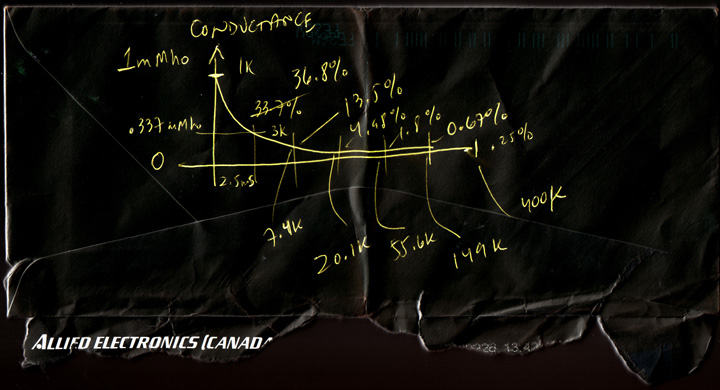 |
Basic Principle using VCCS and CCCS Controlled Current Sources
-> using Spec-Sheet LED modeling at first
 |
Model Breakdown including Log Conversion of Data
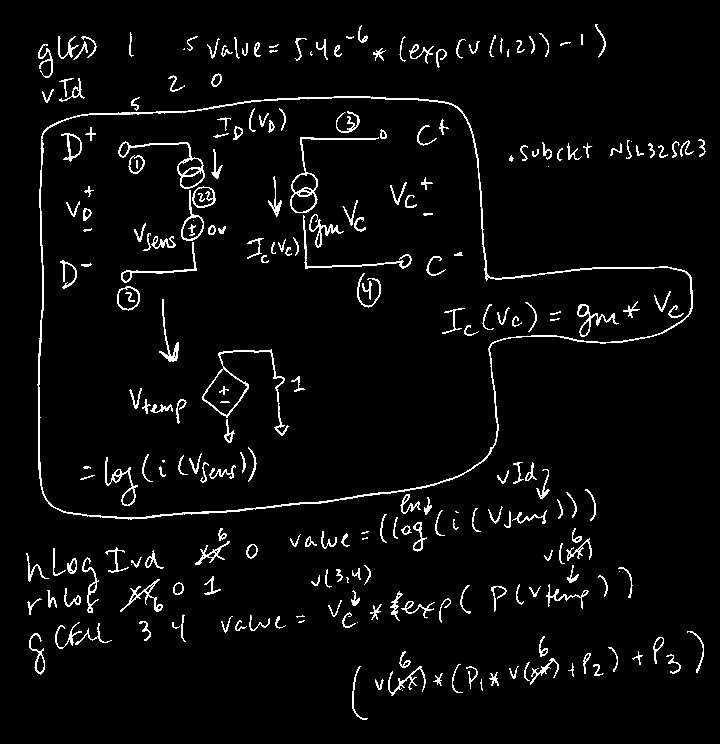 |
NSL-SR3 Static Spice Model with Spec-Sheet LED modeling
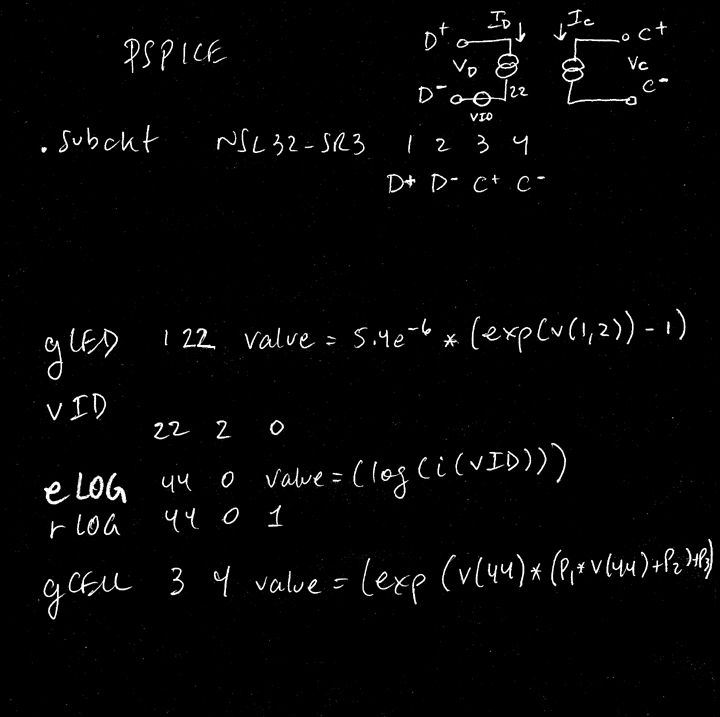 |
Measured iLed-Rcell Data
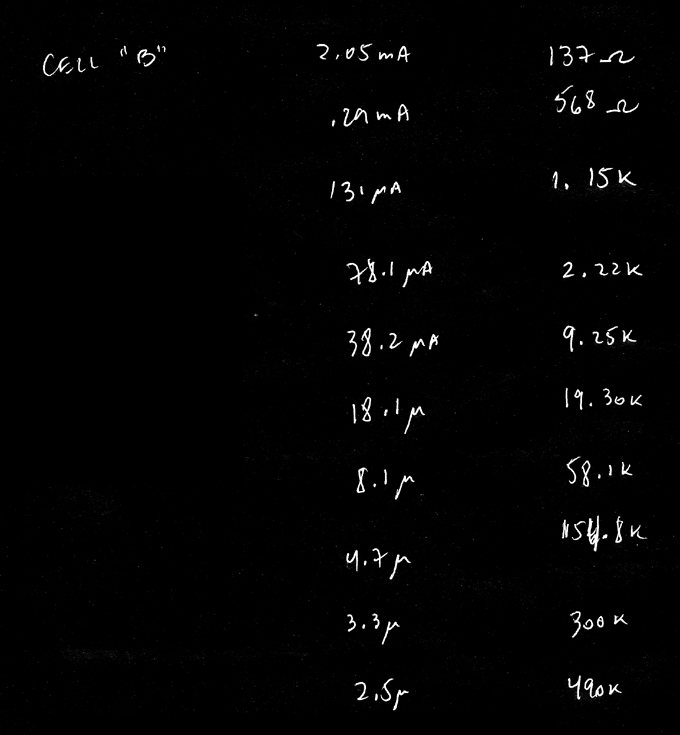 |
Cell Math with Lin/Log(Final) Data Conversion to ease interpolation
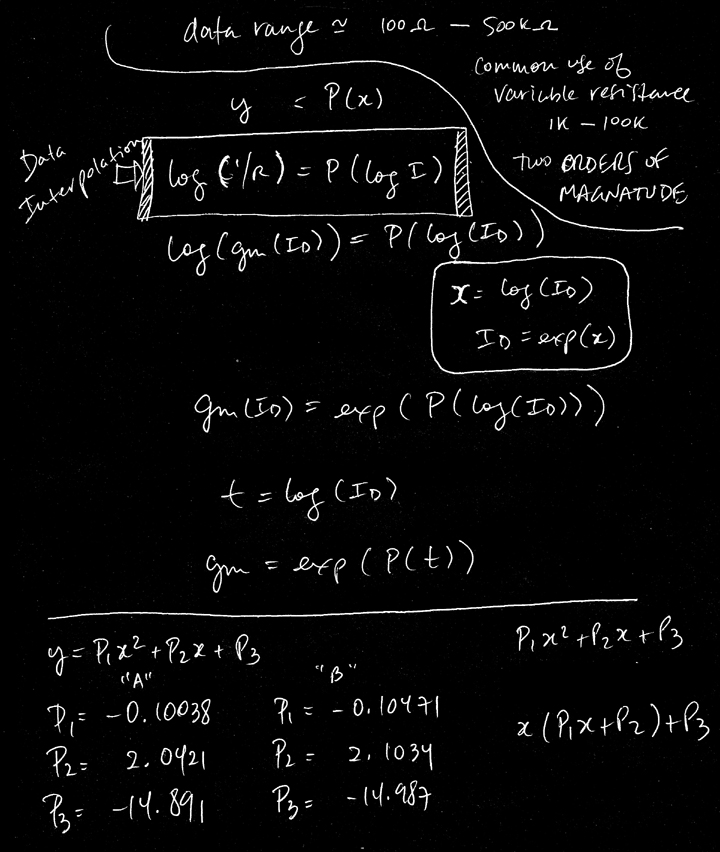 |
Matlab Interpolation of Log-converted Data
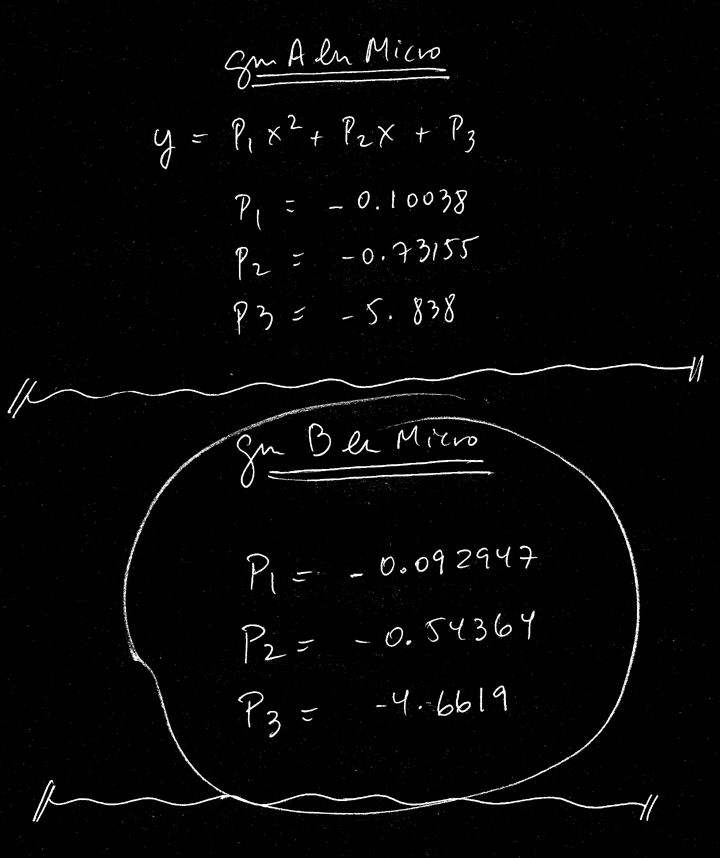 |
Measured LED V-I Data - 3rd Order and 1st Order (Final) Math
log converted LED Data well approximated by Line - so Data very exp-like as expected
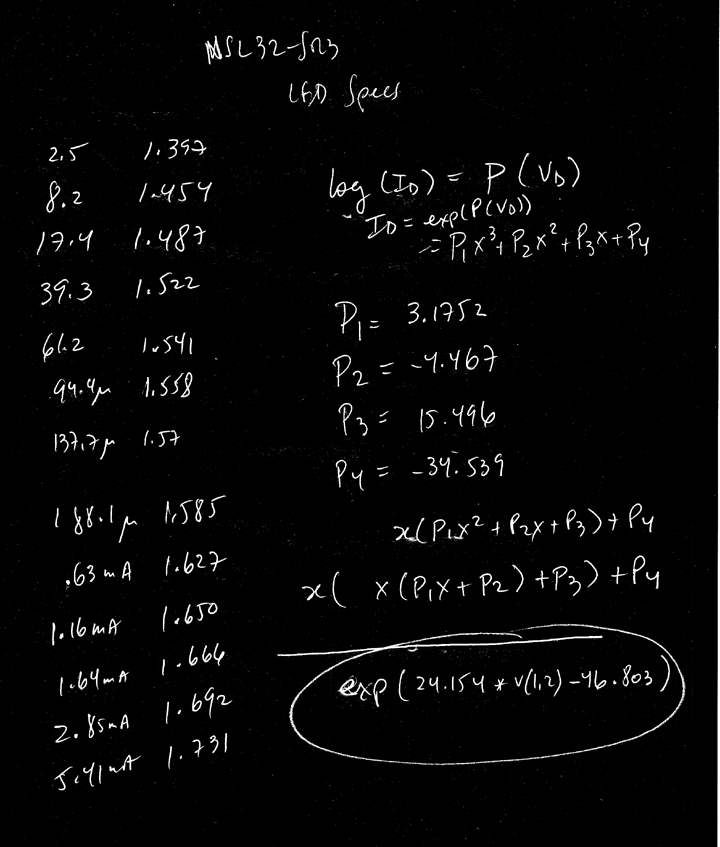 |
Model Output Data Voltage from 1A Cell (test) Current
**LED and Cell Modeling from Measured Data (curve "B" in graph)**
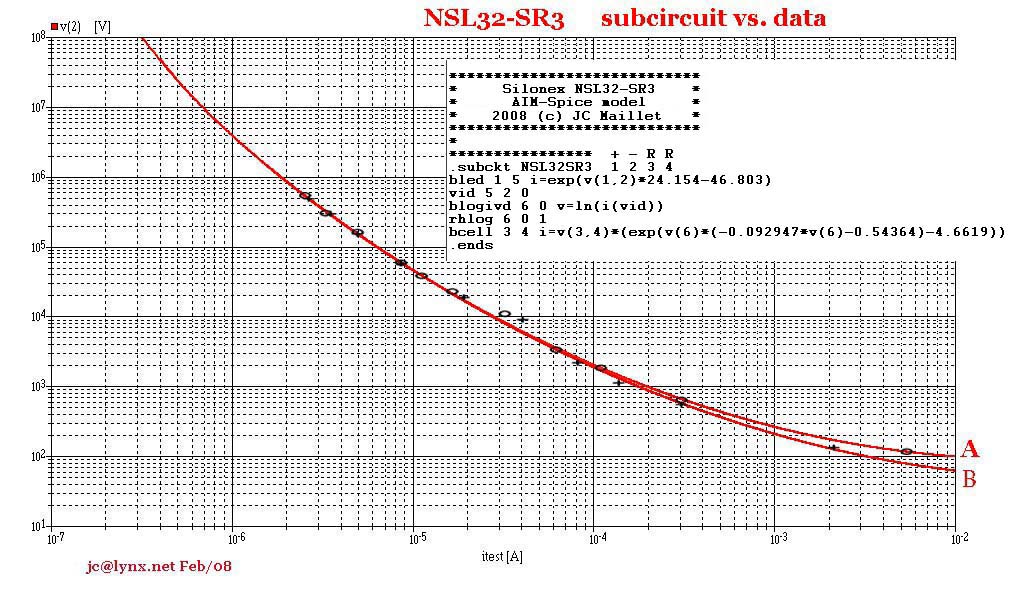 |
HR>
Design spinoffs:
simple and accurate linear-db converter for resistance control of gain
simple low-voltage (3v) optical multi-potentiometer circuitry with stretchable "S" profile
wide range Filters and Gain blocks with sweep Gain and Offset controls
low-noise mute and current-mirror control functions, symmetric bi-oscillator interfacing for stereo anti-phase effects
and a couple more surprises ...
\\\ ** UPDATE 05/2020 ** ////
see here for the latest updates to my NSL32-SR3 modelling efforts :
viva Analog /// jc -> lynx.net









